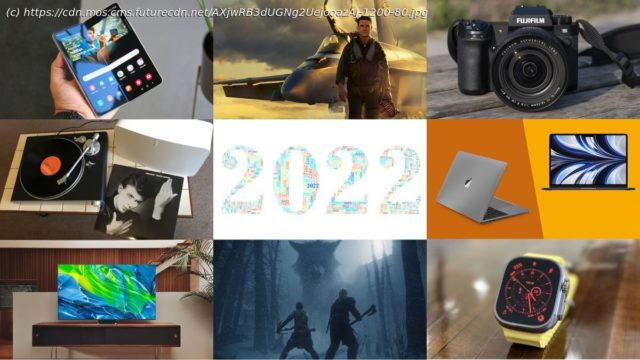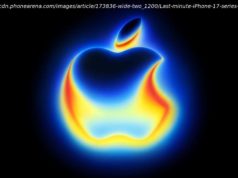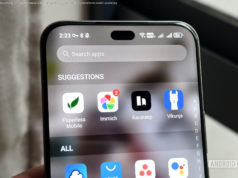TechRadar’s editors and writers look back on the big news and product launches of 2022, and look forward to what 2023 will bring.
Goodbye, 2022 – and hello to the shiny new world of 2023! Granted, it doesn’t look much different yet, but then we are only a few hours into the new year.
So, what were our tech highlights of the past 12 months – and what can we expect to see in 2023? In short: lots. Virtually every week brought a massive new product launch or big story in one of the categories we cover, from the iPhone 14 Pro’s Dynamic Island to the arrival of QD-OLED screen tech in TVs, and from ever-more-powerful graphics cards to AI-powered autofocus in cameras. And 2023 promises to be every bit as exciting, beginning right away with the tech fest that is CES 2023.
If you’re subscribed to TechRadar’s newsletters you’ll already have seen this round up appear in your inbox in the shape of our Year in Review; if you haven’t subscribed yet – well there’s your new year resolution for 2022…
So, without further ado, read on for our 2022 highlights and 2023 predictions.
2022 didn’t see any great leaps forward in the smartphone space writes Lance Ulanoff, US Editor-in-Chief. We mostly got more of everything – better cameras, brighter screens, and incremental improvements in performance and battery life. But there were some innovations that made the year’s best new phones significantly more interesting than what came before.
Apple officially split its handset line down the middle, finally putting the flagship model in a lower tier with slightly less-than screen technology. We’ve had better cameras on the Pro line for a while, but the iPhone 14 (opens in new tab) line pushes the distinction between Pro (premium) and regular (good enough for most) further. What this means is that the iPhone 14 and iPhone 14 Plus (opens in new tab) kept legacy screen technology (the notch!), while the iPhone 14 Pro (opens in new tab) and iPhone 14 Pro Max (opens in new tab) got the fungible Dynamic Island (opens in new tab), which I love. Apple was also one of the first, in the US market at least, to do away with the physical SIM slot in favor of an eSIM-only setup.
While Apple reached for the stars with the first satellite SOS system (opens in new tab) on a consumer smartphone, Samsung might be offering the more fully-rounded set of updates across its handset line. It remains firmly committed to the foldable space and, while the Galaxy Z Fold 4 (opens in new tab) and Galaxy Z Flip 4 (opens in new tab) weren’t major redesigns, both handsets feel a lot less like flexible tech oddities and more like super-versatile ‘regular’ smartphones; maybe next year they’ll be a little cheaper. The company’s Galaxy S22 line was generally excellent, with the beefy and S Pen-friendly Galaxy S22 Ultra (opens in new tab) being the highlight – and its Space Zoom (opens in new tab) photography magic remains unmatched in the smartphone space.
Perhaps the most talked-about device was the – in my opinion appropriately named – Nothing Phone 1 (opens in new tab). A lot of people got very excited about a handset with a transparent chassis, but there’s, well, nothing special about this device, other than that it’s a potential competitor for Samsung, OnePlus and, much less so, Apple. I wonder if we’ll be talking about the Nothing Phone 2 next year.
Google packed the year with the Pixel 6, Pixel 6a and the refreshed and more premium-feeling Pixel 7 Pro (opens in new tab) (and 7), which has excellent cameras and some cool tricks like the Magic Eraser (opens in new tab).
What we didn’t get this year was ultra-fast charging, battery capacity breakthroughs, thinner phones, or brand-new screen technologies. I think all of those things are possible in 2023; at the very least, expect iPhones with USB-C, and even some charging-port-free handsets.
The humble analog record’s surprising renaissance continued in 2022, writes Becky Scarrott, Senior Audio Writer, not only with intriguing new vinyl-plus physical music formats (opens in new tab) touted by Bob Dylan himself, and inexpensive products that allow you to cut your own record (opens in new tab) (and then play it), but with ever-more innovative ways of enjoying your burgeoning collection of LPs and 45s.
The 2021-issue Rega Planar PL1 (opens in new tab) remains one of the best turntables you can buy, but setups that don’t require multiple boxes and a set of passive speakers cluttering up your den were the order of 2022 – see Victrola’s Sonos-certified deck (opens in new tab) for starters. All it needs is a Sonos wireless speaker and the Victrola companion app on your device – plus of course your lovely stacks of wax.
Now headphones: wired audiophile-grade cans got cheaper (see Sivga’s Oriole proposition (opens in new tab)), while the best true wireless earbuds (opens in new tab) and over-ears went to both extremes, with the JLab Go Air Pop (opens in new tab) costing less than a round of drinks (and being ridiculously good for the money) and the Focal Bathys (opens in new tab) setting you back a month’s rent.
In the heavy-hitter arena, the Sony WH-1000XM5 (opens in new tab) arrived, and predictably bettered their own siblings (but only just), and the Apple AirPods 2 (opens in new tab) solidified what we already knew about Apple’s talent in head-tracked Spatial Audio and active noise-cancellation – as long as you stick within the iOS bubble.
And somewhere in the melee, a new King of midrange over-ears emerged: the Sennheiser Momentum 4 Wireless (opens in new tab). Gosh those are good…
But perhaps the most exciting development in wireless audio in 2022 wasn’t the actual wireless over-ears (opens in new tab) (or buds) themselves, but the software inside them. Hi-res Bluetooth codecs are advancing at a rate of knots, but the SoC (system on chip) hardware they’re built into is also under near-constant improvement. In December, Oppo went live with a new chip (opens in new tab) that’s claimed to bring Bluetooth wireless resolution up to the standards audiophiles might deem acceptable – and crucially, the chip will fit into earbuds.






